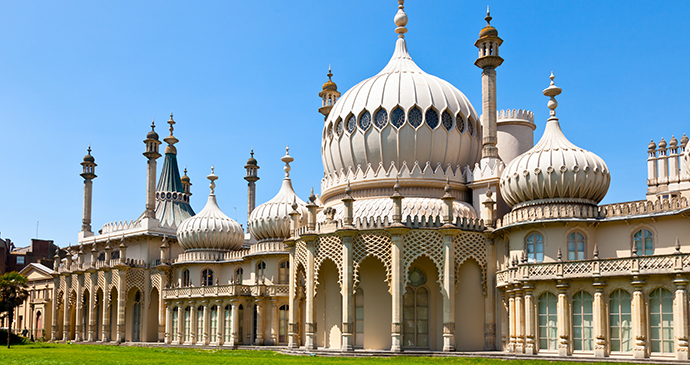
Brighton and Hove, as they are jointly called nowadays, celebrate being different with great aplomb, and there’s much pleasure picking one’s way through their less likely-looking further reaches as well as the more trumpeted aspects.
The most densely populated strip of coast in the southeast is a proverbial mixed bag, and it’s not an area in which you are promised sense of place wherever you go. But Brighton and Hove, as they are jointly called nowadays, celebrate being different with great aplomb, and there’s much pleasure picking one’s way through their less likely-looking further reaches as well as the more trumpeted aspects of one of the country’s most rewarding seaside resorts.
Connoisseurs of local museums should beat a path to Worthing, Hove and Brighton, which together have a notable trio. Worthing’s archaeology and costume stand out; Hove’s has a great tearoom after you’ve perused the very early silent films of the ‘Hove pioneers’. Brighton’s, as you’d expect, is wonderfully eclectic. For complete unexpected quirkiness, Shoreham takes some beating with its Art Deco airport, Norman church architecture, maritime/local history museum and jaw-dropping assemblage of houseboats.
Inland are some of the most visited parts of the South Downs: Ditchling Beacon and Devil’s Dyke get the crowds, but you may prefer to walk over to the Chattri War Memorial, Cissbury’s prehistoric ramparts and flint mines or Jack and Jill Windmills, or to savour the immediate sense of tranquillity found in those innumerable folds in the landscape. Ditchling’s imaginatively revamped museum explores a variety of changing art-related themes; the village was home to a notable colony of craftspeople in the early 20th century. Steyning is a town with plenty of Slow attributes, and is handily placed for walks up to Chanctonbury Ring, one of those rare features on the Downs that are identifiable from a distance.
Further north, the Low Weald has some notable moments, with the headquarters of the Sussex Wildlife Trust at Woods Mill and the Downs Link cycle route heading north to Surrey. In the far north of the area covered by this chapter, Horsham has some lovely streetscapes around its church, and Tilgate Park is a rewarding strolling ground on the peripheries of Crawley.